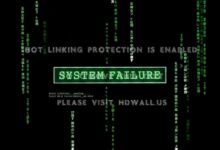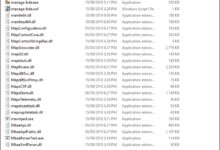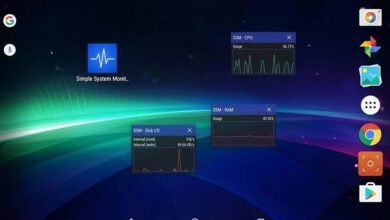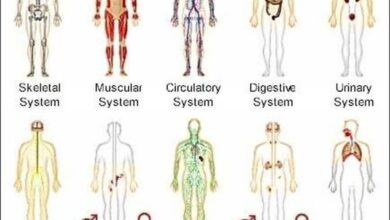System Files 101: 7 Essential Facts You Must Know Now
Welcome to the ultimate guide on system files—your gateway to understanding the invisible backbone of your computer. Whether you’re a curious beginner or a seasoned tech enthusiast, this deep dive will uncover what system files really are, why they matter, and how they shape your device’s performance.
What Are System Files and Why Do They Matter?

At the heart of every operating system lies a collection of critical components known as system files. These files are the unsung heroes that enable your computer to boot, run applications, manage hardware, and maintain stability. Without them, your device would be nothing more than a lifeless shell.
The Definition of System Files
System files are pre-installed, protected files that form the core structure of an operating system. They include executable binaries, configuration scripts, dynamic link libraries (DLLs), and kernel modules. These files are typically hidden from regular users to prevent accidental deletion or modification.
- They are essential for OS initialization and operation.
- Most are located in protected directories like
C:WindowsSystem32on Windows or/usr/binand/etcon Linux. - Operating systems mark them with special attributes (e.g., hidden, read-only, system).
Types of System Files by Function
Not all system files serve the same purpose. They can be categorized based on their role within the OS architecture:
Kernel Files: The core of the OS, managing memory, processes, and hardware communication (e.g., ntoskrnl.exe in Windows).Device Drivers: Software that allows the OS to communicate with hardware (e.g., dxgkrnl.sys for graphics).Configuration Files: Store settings for the OS and applications (e.g., boot.ini, registry hives).Dynamic Link Libraries (DLLs): Shared code libraries used by multiple programs (e.g., kernel32.dll).
.Boot Files: Critical during startup (e.g., bootmgr, BCD).”System files are like the DNA of your operating system—they contain the instructions that define how your computer behaves.” — Microsoft Tech Documentation
How System Files Work Behind the Scenes
While most users never interact directly with system files, they are constantly at work.From the moment you press the power button, these files orchestrate a complex sequence of events that bring your system to life..
The Boot Process and System Files
When you turn on your computer, the BIOS or UEFI firmware initiates a chain of events involving several key system files:
- The firmware locates the Master Boot Record (MBR) or GUID Partition Table (GPT).
- The boot loader (e.g.,
bootmgr) is loaded from the system partition. - The Windows Boot Manager reads the Boot Configuration Data (BCD) file.
- The kernel (
ntoskrnl.exe) is loaded into memory. - System drivers and services are initialized.
This entire process relies on the integrity of system files. If any are missing or corrupted, the system may fail to boot.
Runtime Operations and File Dependencies
Once the OS is running, system files continue to play a vital role. Applications depend on shared libraries and system APIs to function. For example, when you open a file, the OS uses kernel32.dll to handle file I/O operations.
- Applications call system functions through DLLs.
- The OS uses configuration files to apply user and system policies.
- Memory management is handled by kernel-mode system files.
These interactions happen seamlessly, but they highlight the interconnected nature of system files.
Common Locations of System Files Across Operating Systems
Different operating systems organize system files in distinct ways. Understanding where these files reside helps in troubleshooting and system maintenance.
Windows: The C:Windows and System32 Hierarchy
On Windows, the primary location for system files is the C:Windows directory and its subfolders:
- C:WindowsSystem32: Contains core executables, DLLs, and drivers.
- C:WindowsSysWOW64: 32-bit system files on 64-bit systems.
- C:Windowswinsxs: Component Store for Windows updates and side-by-side assemblies.
- C:Windowsinf: Driver installation files.
- C:WindowsPrefetch: Performance optimization files.
Accessing these folders requires administrator privileges, and modifying them can lead to system instability.
Linux: The /bin, /sbin, /etc, and /usr Structure
Linux follows the Filesystem Hierarchy Standard (FHS), which defines standard locations for system files:
- /bin: Essential user binaries (e.g.,
ls,cp). - /sbin: System binaries for administrative tasks (e.g.,
fdisk,iptables). - /etc: Configuration files for the system and applications.
- /usr: Secondary hierarchy for user programs and libraries.
- /lib and /lib64: Shared libraries needed during boot and runtime.
Linux users can inspect these files using terminal commands like ls, cat, or file, but editing them requires root access.
macOS: The Hidden Core in /System and /Library
macOS, being Unix-based, shares similarities with Linux but has its own structure:
- /System: Contains the core operating system files (e.g., frameworks, kernel extensions).
- /Library: System-wide resources and preferences.
- /usr: Standard Unix directories for binaries and libraries.
- /private: Houses critical directories like
/varand/etc.
Apple restricts modifications to /System in modern macOS versions using System Integrity Protection (SIP), enhancing security.
Dangers of Corrupted or Missing System Files
System files are designed to be stable, but they can become corrupted due to hardware failures, malware, improper shutdowns, or failed updates. When this happens, the consequences can range from minor glitches to complete system failure.
Symptoms of System File Corruption
Recognizing the signs of corrupted system files is crucial for early intervention:
- Blue Screen of Death (BSOD) with error codes like
0x0000007Eor0x00000050. - Applications failing to launch or crashing unexpectedly.
- Slow boot times or failure to reach the login screen.
- Missing or distorted system UI elements.
- Error messages like “DLL not found” or “File is missing or corrupt”.
These symptoms often point to issues with critical system files like ntdll.dll or hal.dll.
Common Causes of System File Damage
Several factors can lead to system file corruption:
- Malware Infections: Viruses and ransomware often target system files to disable security or render the system unusable.
- Power Outages: Sudden shutdowns during file writes can leave system files in an inconsistent state.
- Failed Updates: Incomplete or interrupted OS updates may overwrite or corrupt existing files.
- Hardware Issues: Bad sectors on a hard drive can damage stored system files.
- User Tampering: Accidental deletion or modification of system files by users with admin rights.
According to a 2023 report by Kaspersky, over 30% of system instability cases were linked to file corruption caused by malware or improper shutdowns.
How to Repair System Files on Windows
Windows provides built-in tools to diagnose and repair corrupted system files, making recovery accessible even to non-technical users.
Using System File Checker (SFC)
The System File Checker (SFC) is a command-line utility that scans for and restores corrupted system files.
- Open Command Prompt as Administrator.
- Run the command:
sfc /scannow. - The tool will scan all protected system files and replace incorrect versions with cached copies from
%WinDir%System32DllCache.
SFC is often the first line of defense and can resolve many common issues. More information is available on the official Microsoft documentation.
Using DISM (Deployment Image Servicing and Management)
If SFC fails, the DISM tool can repair the Windows image itself, which SFC depends on.
- Run:
DISM /Online /Cleanup-Image /RestoreHealth. - DISM uses Windows Update to download replacement files.
- After DISM completes, run SFC again to finalize repairs.
This two-step process is recommended by Microsoft for persistent system file issues.
Manual Replacement and Recovery Options
In extreme cases, manual intervention may be necessary:
- Boot from a Windows installation USB/DVD.
- Use the repair options to access Command Prompt.
- Replace specific files from a known good source.
- Perform a system restore or reset if corruption is widespread.
Caution: Manual replacement should only be done if you know the exact file and its location, as incorrect files can make the system unbootable.
Protecting System Files from Unauthorized Changes
Prevention is better than cure. Securing system files from tampering and corruption is a key aspect of system maintenance.
File Permissions and Access Control
Modern operating systems use access control lists (ACLs) to restrict who can modify system files.
- On Windows, only the TrustedInstaller account has full control over most system files.
- Regular users operate with limited privileges, preventing accidental changes.
- Administrators can take ownership but are prompted for confirmation.
Modifying permissions on system files is strongly discouraged unless absolutely necessary.
Antivirus and Real-Time Protection
Malware is a leading cause of system file corruption. A robust antivirus solution can prevent this:
- Enable real-time scanning to detect threats before they execute.
- Use behavior-based detection to catch zero-day attacks.
- Keep virus definitions updated.
Windows Defender (now Microsoft Defender) provides built-in protection and integrates with the OS to safeguard critical files.
System Integrity Protection (SIP) on macOS
Introduced in OS X El Capitan, SIP prevents even root users from modifying protected system files.
- Protects directories like
/System,/sbin, and/usr. - Can be disabled temporarily in Recovery Mode for advanced tasks.
- Helps prevent malware from altering the OS at a deep level.
SIP is a powerful security feature that enhances the resilience of macOS against attacks.
Advanced Tools for Managing System Files
For IT professionals and advanced users, several tools offer deeper insight and control over system files.
Resource Monitor and Process Explorer
While Task Manager shows running processes, tools like Resource Monitor and Microsoft’s Process Explorer reveal which system files are in use.
- Process Explorer can show DLLs loaded by each process.
- Helps identify rogue software injecting into system processes.
- Available for free from the Microsoft Sysinternals suite at learn.microsoft.com/en-us/sysinternals.
Registry Editor and Configuration Management
The Windows Registry is a database of system and application settings, stored in system files like NTUSER.DAT and SYSTEM.
- Accessible via
regedit. - Modifying registry entries can affect system behavior.
- Always back up the registry before making changes.
Incorrect edits can render the system unstable, so caution is essential.
Linux Package Managers and File Verification
On Linux, package managers like apt (Debian/Ubuntu), yum (RHEL), or pacman (Arch) manage system files and can verify their integrity.
- Use
debsumson Debian to check file checksums. - Run
rpm --verifyon Red Hat systems. - Reinstall packages to restore missing or corrupted files.
These tools ensure that system files remain consistent with the original distribution.
Myths and Misconceptions About System Files
There are many myths surrounding system files, often perpetuated by outdated advice or misinformation.
“Deleting System Files Speeds Up the Computer”
This is dangerously false. Some users believe that removing “unnecessary” system files frees up space and improves performance. In reality, deleting system files can cripple the OS.
- Even seemingly redundant files may be required under certain conditions.
- Windows uses sophisticated caching and memory management; deleting files doesn’t improve speed.
- Such actions often lead to boot failures or application crashes.
“All .dll Files Are System Files”
Not all DLLs are system files. While many are, applications also use private DLLs stored in their own directories.
- System DLLs are usually in
System32orSysWOW64. - Application-specific DLLs should not be moved or deleted.
- Mixing them up can cause dependency errors.
“System Files Can’t Be Updated”
On the contrary, system files are updated regularly through OS updates, security patches, and driver upgrades.
- Windows Update installs new versions of system files.
- Linux distributions update system files via package managers.
- Updates often fix bugs, improve performance, and patch vulnerabilities.
Keeping system files up to date is a critical part of system security.
Best Practices for System File Maintenance
Maintaining the health of system files is an ongoing process. Following best practices can prevent issues before they arise.
Regular System Scans and Monitoring
Scheduled scans help catch problems early:
- Run
sfc /scannowmonthly as a preventive measure. - Use DISM periodically if you frequently install software or updates.
- Monitor system logs for file-related errors.
Keeping Your OS and Software Updated
Updates often include fixes for known system file issues:
- Enable automatic updates on Windows, macOS, and Linux.
- Apply security patches promptly.
- Update drivers from manufacturer websites.
Outdated system files are a common attack vector for malware.
Creating System Restore Points
System Restore allows you to roll back system files and settings to a previous state.
- Enable System Protection in Windows.
- Create manual restore points before major changes.
- Use it to undo changes that corrupt system files.
This is a safety net that can save hours of troubleshooting.
What are system files?
System files are essential components of an operating system that enable it to function. They include executables, libraries, drivers, and configuration files necessary for booting, running software, and managing hardware.
Can I delete system files to free up space?
No, you should not delete system files. Doing so can cause your operating system to become unstable or unbootable. If you need to free up space, use built-in tools like Disk Cleanup or remove unused applications and personal files instead.
How do I fix corrupted system files on Windows?
Use the System File Checker (SFC) tool by running sfc /scannow in an elevated Command Prompt. If that fails, run DISM: DISM /Online /Cleanup-Image /RestoreHealth, then run SFC again.
Are system files the same across different operating systems?
No, system files vary significantly between operating systems. Windows uses files like ntoskrnl.exe and hal.dll, Linux relies on binaries in /bin and /sbin, and macOS uses Unix-based structures with additional protections like SIP.
Why are system files hidden?
System files are hidden to protect them from accidental deletion or modification by users. They are critical to system stability, and even small changes can lead to serious issues. The OS marks them as hidden and often sets strict permissions to prevent unauthorized access.
Understanding system files is essential for anyone who uses a computer. These files form the foundation of your operating system, enabling everything from booting up to running complex applications. While they operate behind the scenes, their health directly impacts your system’s performance and stability. By learning how to identify, protect, and repair system files, you can prevent common issues and extend the life of your device. Whether you’re troubleshooting a problem or simply maintaining your system, respecting the role of system files is key to a smooth computing experience.
Recommended for you 👇
Further Reading:









